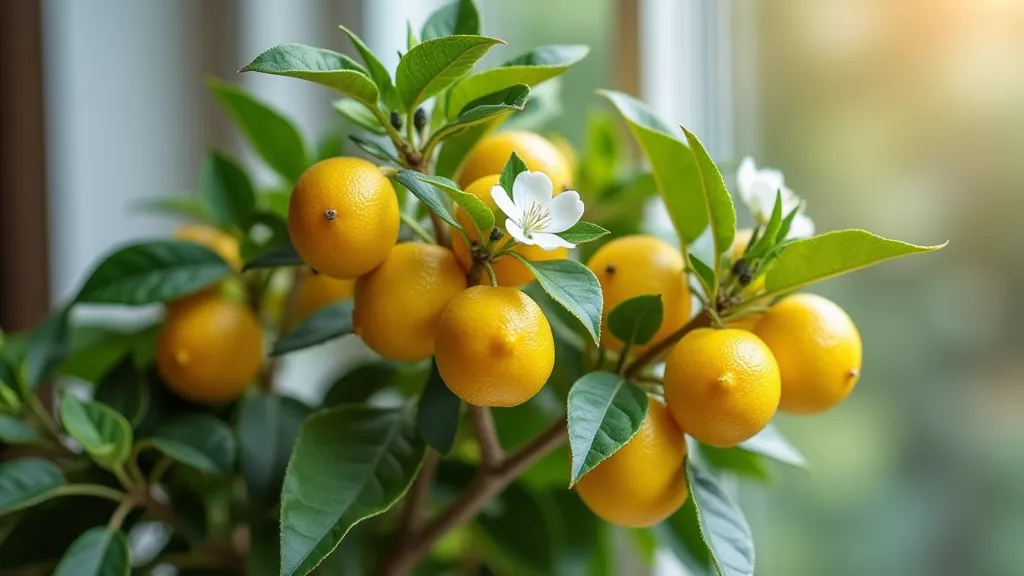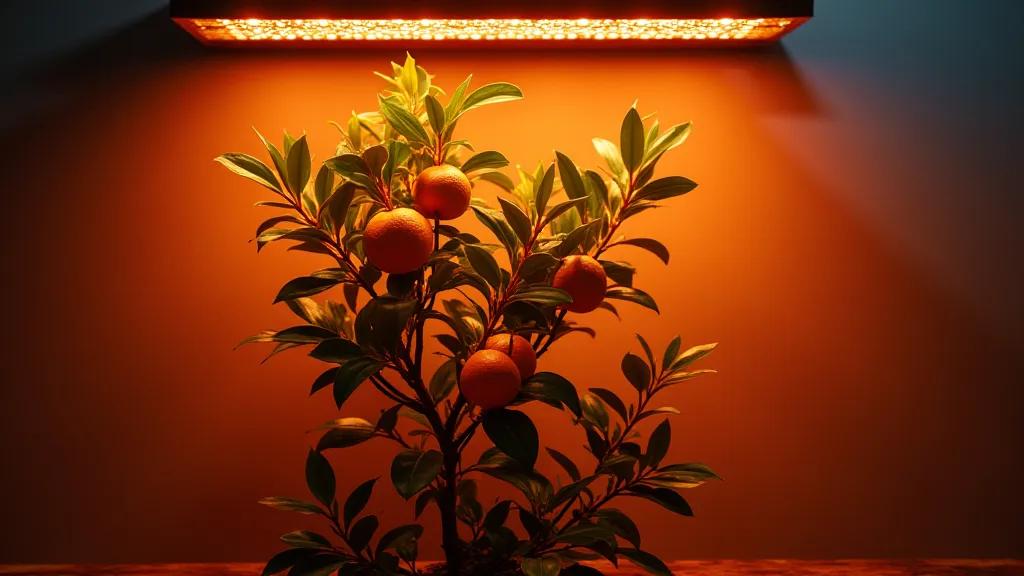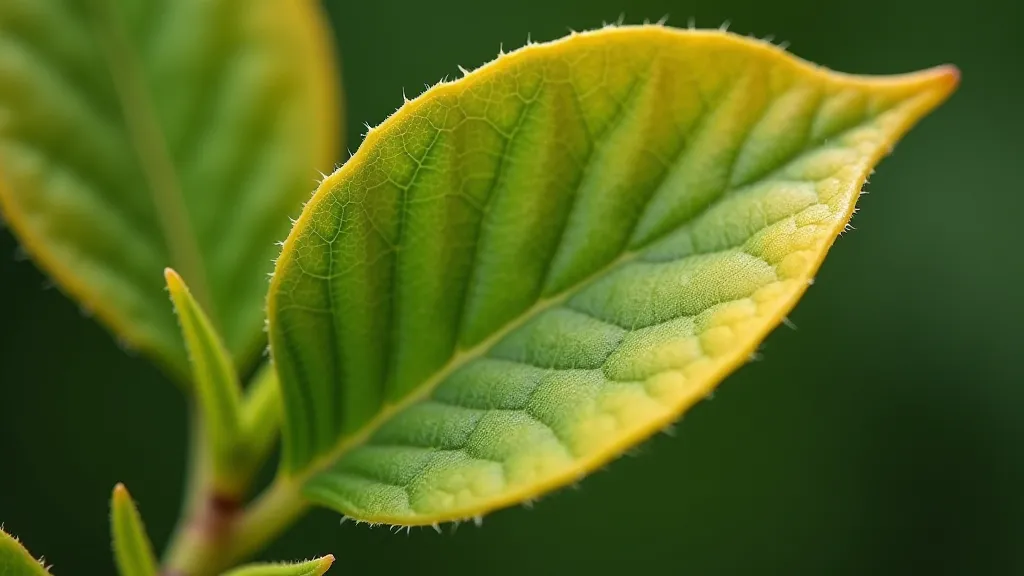Essential Lighting for Indoor Citrus: Natural & Artificial Options
Growing dwarf citrus trees indoors is a rewarding experience, offering the joy of fresh fruit and fragrant blossoms even without a traditional outdoor garden. However, one of the biggest challenges is providing adequate light. Citrus trees are sun-loving plants and require a significant amount of light to thrive and produce fruit. This article will explore the light requirements of dwarf citrus trees and discuss ways to provide sufficient illumination indoors, covering both natural and artificial options.
Understanding the Light Requirements
Dwarf citrus trees need at least 6-8 hours of direct sunlight per day to produce flowers and fruit. Insufficient light results in weak growth, a lack of flowering, yellowing leaves (chlorosis), and eventual decline. Even dwarf varieties, bred for smaller stature, still need ample light. Ensuring the correct pH and nutrients in your soil is also vital; for more information, explore potting and soil mix for thriving dwarf citrus. Selecting the right growing medium sets the stage for healthy growth, which is then supported by adequate lighting.

Maximizing Natural Light
The easiest and most beneficial way to provide light to your dwarf citrus tree is through natural sunlight. Here's how to maximize it:
- South-Facing Windows: These are the ideal location. A south-facing window receives the most sunlight throughout the day, particularly in the northern hemisphere.
- East & West-Facing Windows: These offer decent light, but may require supplemental lighting, especially during winter months.
- North-Facing Windows: These receive very little direct sunlight and are generally unsuitable for citrus trees unless combined with significant artificial lighting.
- Clean Windows: A surprising amount of light can be blocked by dirty windows. Regularly clean them to maximize light penetration.
- Consider Seasonal Changes: The angle of the sun changes throughout the year. Rotate your tree regularly to ensure even exposure to sunlight and prevent it from leaning towards the light source.
Artificial Lighting Solutions: Grow Lights to the Rescue
When natural light is insufficient, grow lights become essential. Several types of grow lights can effectively supplement or even replace sunlight for your dwarf citrus trees:
- LED Grow Lights: These are currently the most popular choice due to their energy efficiency, long lifespan, and relatively low heat output. Look for full-spectrum LEDs designed to mimic sunlight.
- Fluorescent Grow Lights (T5 or Compact Fluorescent): These are a more affordable option but less efficient than LEDs.
- High-Intensity Discharge (HID) Lamps (Metal Halide or High-Pressure Sodium): These are powerful lights capable of providing a lot of light, but they generate significant heat and consume a lot of electricity. They are generally not recommended for beginners.

Placement and Intensity
The distance between the grow light and the tree is crucial. Generally, the closer the light, the more intense it needs to be. Begin with the light positioned 12-18 inches away from the foliage and observe the tree’s response. Adjust the distance as needed based on leaf color and growth.
Too little light will result in etiolation (leggy growth) and yellowing leaves. Too much light can cause leaf burn or bleaching. It's always better to start with less light and gradually increase it as needed. Maintaining the health of your tree is an ongoing process. Sometimes pests or diseases can set back your progress; for information on how to manage these issues, consider reading about dealing with pests & diseases on indoor citrus. Preventative measures are just as important as corrective action.
Light Duration
Just like with natural sunlight, dwarf citrus trees need adequate light duration. Aim for 12-16 hours of light per day, either from natural sunlight supplemented with grow lights or solely from grow lights. Providing the right nutrition is also vital. Improper feeding can lead to various issues, including leaf discoloration. For a comprehensive guide on fertilizing, explore fertilizing dwarf citrus trees: a complete guide.

Troubleshooting Lighting Issues & Beyond
Even with careful planning, problems can arise. Yellowing leaves, particularly those with edges showing discoloration, often indicate light deficiency. However, it's important to rule out other causes, such as nutrient deficiencies or root problems. Similarly, leaf burn or a bleached appearance can be a sign of excessive light exposure. Monitoring your tree closely and making adjustments as needed is key. Remember that a balanced approach is crucial – adequate light works in conjunction with proper watering, fertilization, and soil conditions.
Beyond light, pruning plays a vital role in maintaining the health and shape of your dwarf citrus tree. Regularly removing dead or crossing branches improves air circulation, reduces the risk of disease, and encourages fruit production. Incorrect pruning techniques can, however, negatively impact the tree’s ability to photosynthesize and thrive. For guidance on how to properly prune your dwarf citrus, consult pruning dwarf citrus trees: shaping & maintaining health. This ensures a healthy, productive, and aesthetically pleasing indoor citrus paradise.
Choosing the Right Grow Light for Your Space
Selecting the appropriate grow light depends on several factors, including the size of your tree, the available space, and your budget. Full-spectrum LED grow lights are generally the best option for most indoor citrus growers due to their efficiency and low heat output. However, fluorescent grow lights can be a more affordable alternative for smaller trees or limited spaces. If you'd like to use more powerful lights, remember to consider the extra heat production and energy consumption of HID lamps.
Conclusion
Providing adequate lighting is paramount for the health and productivity of your indoor dwarf citrus trees. By carefully assessing your natural light conditions and supplementing with artificial lights when necessary, you can create a thriving indoor citrus paradise and enjoy the fruits (and fragrance!) of your labor.





